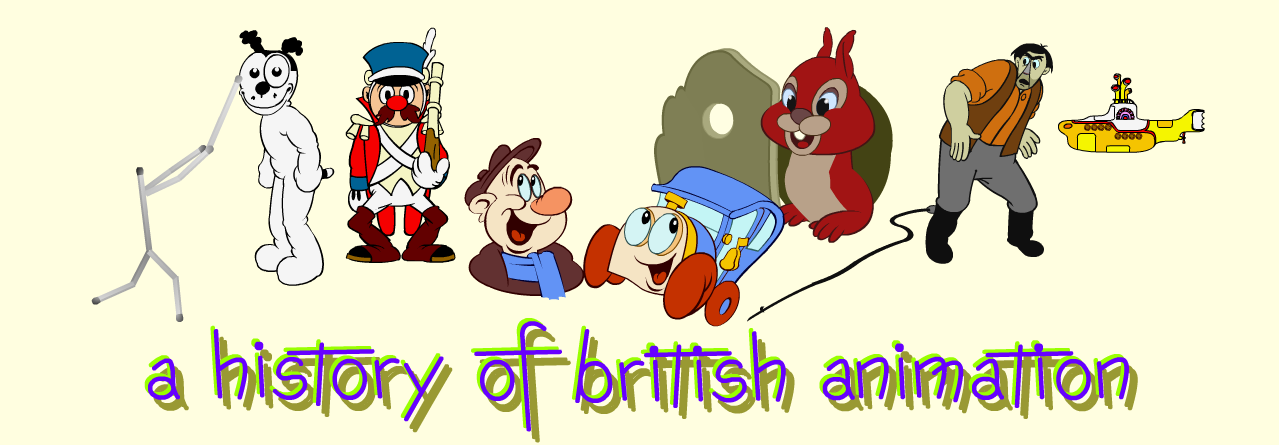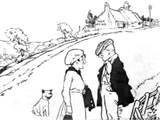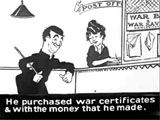

|
 | E P Kinsella(1875-1936) |  |
||
|
Patrick Russell Edmund Kinsella was born in Liverpool in 1875, the son of Peter "Pat" Kinsella, actor and singer, who toured the British music halls with his wife, Flora, and also ran a small music hall in Dublin. It is probable that Patrick junior was known as Edmund to distinguish him from his father. When he moved to London to work as an illustrater and designer of theatrical sets and posters. he used the name Edmund Patrick Kinsella. He married Emma Lilian Webber in late 1903, and they had three children: Ena (b. 1904), Peter (b. 1906) and Mary (known as Mollie, b. 1908). In 1906 a design for a humorous postcard showing a boy playing cricket led to a successful series of postcards depicting boys, and girls, playing various sports. It is worth noting that if Kinsella had models for the "Kinsella Boy" and "Kinsella girl" they were not his own children: Ena was only 2 and Peter was a newborn babe. During World War I, he and Horace Morgan formed the Kinsella & Morgan Film Company to make cartoons and live-action shorts for the War Aims Committee. Between 1917-18, Kinsella produced seven Kincartoons, as well as animated sequences for a live-action short. He eschewed the elaborate rendering employed by his contemporaries for a more modern line drawing style utilising white space. This enabled him to use multiple drawing animation in the American style. He still used cutouts, as well as employing the 'Lightning Artist' device of drawing the image in front of the camera, which helped to pad out the footage. He had fun with the idea: in one film the title appears to be drawn by a real pen moving on its own, the end presumably supported by an invisible thread, and in another the artist's hand draws a picture of a hand which then (moving as a cutout) proceeds to draw the scene. Kinsella knew the comedian George Robey, and featured him in one of the Kincartoons, Simple Simon. where Robey appears in live-action as the supposed artist/animator (the film is credited as "by George Robey") and also in cartoon form, caricatured as the main character. (Robey did draw cartoons, but the style of the film appears to be Kinsella's.) Robey also starred in a Kinsella & Morgan live-action comedy, George Robey's Day Off (1918). In an interview published in The Picture Show magazine 10 May 1910 Robey reveals his next film would be Dinky Doo: "It is being produced by Mr. E. P. Kinsella, who also produced 'The Day Off.' I cannot tell you much about it at the present, but in it I play the part of Madam Cupid, a clairvoyant." There is no record of this film being released; Robey went on to make several films for the Stoll Film Company, but Kinsella was not involved. He did, however, illustrate several books by Robey. Kinsella & Morgan ceased film production when the War ended. Kinsella had continued his illustration work during this period, producing posters for the Melville brothers who owned the Lyceum Theatre in the Strand, and this continued through the 1820s. The V&A has a hand-drawn postcard sent to Walter Melville on 20 July 1922, showing E. P. grovelling at Melville's feet, imploring "Take my paints, my palette, my maul, but don't take my 'chield'." An arrow from the word 'chield' points to a movie camera. Whatever the the 'gag' referred to, the purpose of the card was more mundane: scrawled along the edge of the picture is the message "Dear W. What time will you be at Theatre Thursday- yours Kin/." In 1920 Kinsella was hired to create costume designs and posters for Rudyard Kipling, who had been persuaded by Paul Brunet, the president of Pathé Exchange, New York, to permit them to film some of his stories, on the condition that he should write the screenplay himself. The scenarist Randolph Lewis had been sent to England to assist him, but Kipling, never one to do things by halves, had risen to the challenge of writing for the screen, and now wanted to ensure that the pictorial details were as he desired. In an article for The Strand Magazine (March 1923) entitled Impressions of Rudyard Kipling Kinsella writes: From beginning to end I suppose there were close on 140 models and sketches done for the use and guidance of the producers of the films. There was no single speck in all the dust of detail Kipling did not help and improve, from the exact way of tying a character's sash to the exact pattern of the Mohammedan fretwork decorating a window in Lahore.... We met at the South Kensington Museum [V&A], where the gods of India live, and where Kipling was a man at home. Comment, knowledge, command, flow from him in a running current as he finds, in case after case, something I must note down for 'The Gate of a Hundred Sorrows' or the 'Without Benefit of Clergy' films.... I am the man catching up. 'Get that, Kinsella. She'd wear a cap like that — a coquettish cap, they'd think it there. The feminine is the same all over the world — she'd wear it just as a woman might wear it in France — jauntily set over one eye. And she'd be looking out under the lashes.' I make a rapid sketch of the native cap, I look up, and am surprised he is not there. He is already at a case farther on.... The first film, Without Benefit of Clergy, was well received, and Kipling was pleased with the result. It was expected that The Gate of the Hundred Sorrows, for which Kinsella had completed "a striking poster" (Randolph Lewis's description) would now go into production, with Soldiers Three to follow, but for some reason, probably the removal of Paul Brunet from Pathé Exchange, no further Kipling screenplays were filmed. Kinsella was employed as Art Director on the films School for Scandal (Bertram Phillips Productions 1924) and The Shadow of Egypt (Astra-National Productions 1925). He is presumed to be the illustrator of several book-jackets in the early 1930s, signed E P K. E P Kinsella died at his home in Shoreham-by-Sea, Sussex, on the evening of 8 May 1936, aged 62. |
Filmography (Kincartoons) | ||||
| A Patriotic Message | (Kinsella & Morgan 1917) Co-producer/director, Designer, Animator | |||
| Stand by the Men who have Stood by You | (Kinsella & Morgan 1917) Co-producer/director, Designer, Animator | |||
| Old Father William | (Kinsella & Morgan 1917) Co-producer/director, Designer, Animator | |||
| Jack and Jill | (Kinsella & Morgan 1917/8) Co-producer/director, Designer, Animator | |||
| Simple Simon | (Kinsella & Morgan 1917/8) Co-producer/director, Designer, Animator | |||
| There was a Little Man and He had a Little Gun | (Kinsella & Morgan 1917) Co-producer/director, Designer, Animator | |||
| The Story of the Canel and the Straw (New Version) | (Kinsella & Morgan 1918) Co-producer/director, Designer, Animator | |||
| Shipyard Activity | (Kinsella & Morgan 1918) (animated sequence) Designer, Animator | |||
| Lord Pirrie's Appeal to Shipyard Workers | (Kinsella & Morgan/Pathé Gazette 1918) Designer, Animator | |||
Links to Other Sites | ||||
Peter Hale
Last updated 2019
|